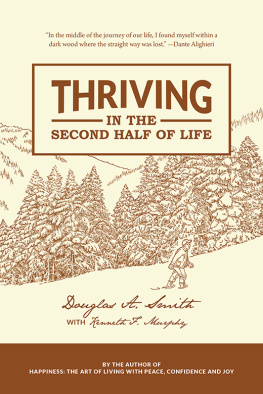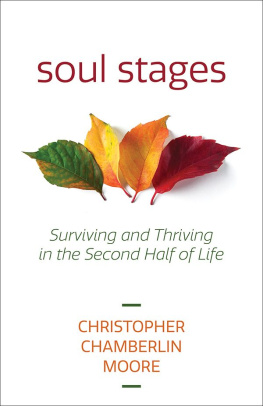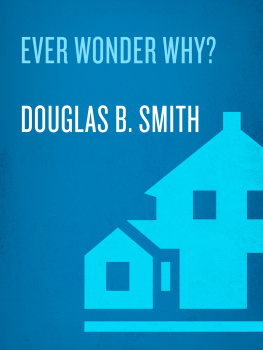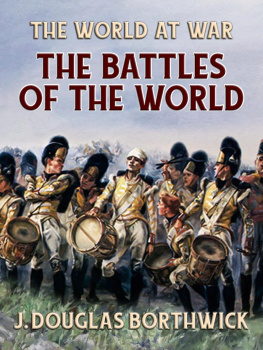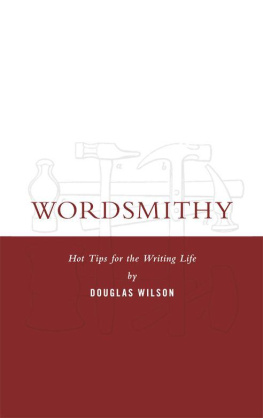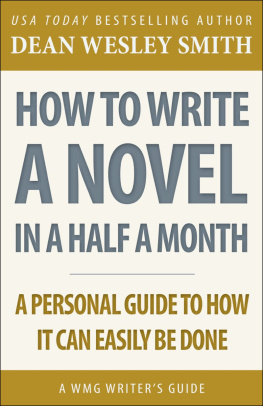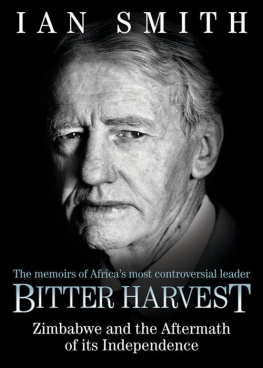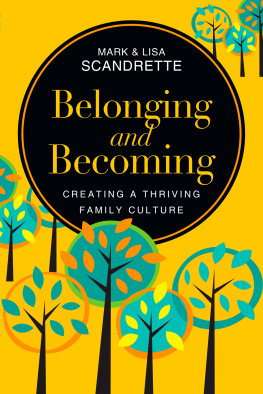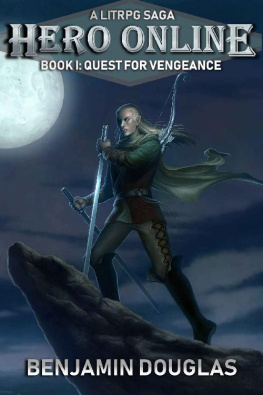Douglas A. Smith - Thriving in the Second Half of Life
Here you can read online Douglas A. Smith - Thriving in the Second Half of Life full text of the book (entire story) in english for free. Download pdf and epub, get meaning, cover and reviews about this ebook. publisher: White Pine Mountain, genre: Religion. Description of the work, (preface) as well as reviews are available. Best literature library LitArk.com created for fans of good reading and offers a wide selection of genres:
Romance novel
Science fiction
Adventure
Detective
Science
History
Home and family
Prose
Art
Politics
Computer
Non-fiction
Religion
Business
Children
Humor
Choose a favorite category and find really read worthwhile books. Enjoy immersion in the world of imagination, feel the emotions of the characters or learn something new for yourself, make an fascinating discovery.
- Book:Thriving in the Second Half of Life
- Author:
- Publisher:White Pine Mountain
- Genre:
- Rating:4 / 5
- Favourites:Add to favourites
- Your mark:
- 80
- 1
- 2
- 3
- 4
- 5
Thriving in the Second Half of Life: summary, description and annotation
We offer to read an annotation, description, summary or preface (depends on what the author of the book "Thriving in the Second Half of Life" wrote himself). If you haven't found the necessary information about the book — write in the comments, we will try to find it.
Thriving in the Second Half of Life — read online for free the complete book (whole text) full work
Below is the text of the book, divided by pages. System saving the place of the last page read, allows you to conveniently read the book "Thriving in the Second Half of Life" online for free, without having to search again every time where you left off. Put a bookmark, and you can go to the page where you finished reading at any time.
Font size:
Interval:
Bookmark:

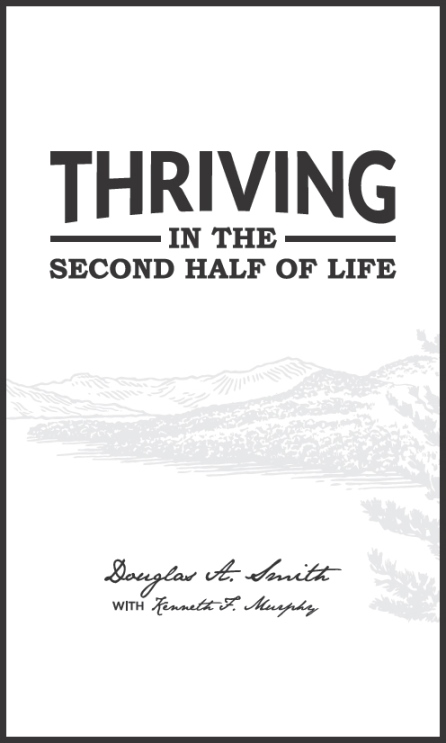
Published by
White Pine Mountain
445 Hutchinson Ave., Ste 270
Columbus, OH 43235
Copyright 2020 by Douglas A. Smith
& Kenneth F. Murphy
Edited by RobinLee Allen
Cover design and layout by
Summerfield Advertising
Illustrations by
Michael West
ISBN: 978-0-9860708-3-9
Library of Congress Control Number: 2020941806
All Rights Reserved. No parts of this book may be reproduced or transmitted in any form or by any means, electronic or mechanical, including photocopying, recording, or by any information storage and retrieval system without written permission from the author, except for the inclusion of brief quotations in a review.
Printed in the United States of America.
The Child is father to the man.
William Wordsworth
For Gordon and Greg
Your mother and I could not have two finer sons.
You have shaped our lives in so many wonderful
ways. May your lives be filled with joy and love
may you both thrive.
Love,
Dad
TABLE OF CONTENTS
On the evening of Sept. 1, 2004, I was sitting in a hematologist office at the Mayo Clinic after two full days of testing to determine the cause of a somewhat strange MRI Id had a month earlier back in Columbus, Ohio. After numerous tests, they could seem to find nothing wrong. As I was about to leave Dr. Whites office with what seemed like a clean bill of health, just like in the movies, the phone rings. The doctor listens intently, hangs up, jots down a few notes, then slowly turns to me and in a soft, compassionate voice tells me that based on the pathology report, I have an incurable form of blood cancer.
In almost all great literature there is an inciting incident. Some major, unexpected, unwelcomed event occurs that forces the protagonist to reconsider the fabric of his or her life. I didnt realize it then, but Dr. Whites unexpected diagnosis was my inciting incident and the launching point of the second half of my life.
On that day at the Mayo Clinic, my life changed. Change often happens in an instant. A life-changing diagnosis, an accident, the loss of a loved one these changes can happen in seconds. What does not happen in an instant, as I have painfully discovered, is the transition required to deal with the change. Major transitions take time, often years, and involve what James Hollis calls traveling through the neutral zone, or what he even more accurately describes as the swampland. The journey through the swampland is almost never without pain and a deep sense of loss and confusion, but the swampland also offers us the opportunity for new perspectives, new insights, in fact new life, if we are persistent and open to what the swampland has to offer.
With my inciting incident, like most protagonists, I resisted entering the swampland. First by ignoring its calling altogether and then seeking to simply escape by quitting my work. I found a blank calendar was not a blessing, but an incredible curse as I experienced a deep and enduring depression not an uncommon state of mind for those entering the swampland. Over a year later, with the help of my loving wife and excellent professional care, I began to emerge from my depression. Emerging from the depression did not end the swampland, but it did open me to the messages its pain and confusion had to offer. I found the swampland is indeed a dismal place, but one filled with opportunity for new growth, new perspectives and the development of a deeper more resilient self. Without the swampland, I would have remained driven by the needs and desires of the first half of life and I would have failed to enter into the richness offered by the second half.
I think for most of us, the first half of life has to fall apart before we move to the depth and clarity of the second half. As long as the way we carry forth in the first half seems to be working, there is little incentive to change what we do or how we think. Whats more, the invitation to the second half is often not very attractive. Mine certainly wasnt. The reality is that most people will have an inciting incident that pushes them toward the second half of life and forces, or at least suggests, the need to re-evaluate. The incident will be different for everyone. Job loss, divorce, illness, the death of a loved one, our changing physical abilities as we age, or some combination of several of these tend to be most common. Some will reject this invitation to the second half. This book is written for those who dont.
Although moving into the second half of life was not easy, I have found it to be an incredibly beautiful journey. In the16 years since Dr. Whites diagnosis launched me into the second half, my life has been richer, deeper and more meaningful. How I think, what I do, how I interact with others, my attitude, my gratitude, how I invest my humble talents all of it, I believe, better serves me, my family and the world. I have come to love this stage of my life. I have evolved from being driven to being inspired, from pleasing my ego to honoring my conscience, from accumulating wealth to contributing wealth, from worrying about status to longing for significance, from doing what others expect of me to honoring what my soul is aching for. I love the view from the second half of life.
I have come to believe that to live a full life, to thrive, or as the science of positive psychology puts it, to flourish, the second half has to be different from the first, and I am afraid the only way to make this journey to the second half is through the swampland. This book is intended to help guide people on this journey.
In 2014 I wrote Happiness: The Art of Living with Peace, Confidence and Joy. The book focused on 13 skills that I believe lead to peace about the past, confidence in the future and joy in the present. Much of what I shared was based on the emerging science of positive psychology. In the intervening six years, I have come to better understand the science of positive psychology and these 13 skills. I have also come to see them in the context of the second half of life. In this book, with the help of my friend Ken Murphy, I have tried to deepen the readers understanding of these same skills and to see them through the lens of lifes second half. Readers of my previous book will find considerable overlap. My hope is that the repetition, coupled with new insights and new tools, will enrich your understanding of the 13 skills and help you better practice them in the second half of life.
The book is structured to illuminate the skills that can lead to thriving in the second half of life and to encourage personal reflection. After an overview of positive psychology, which is the foundation of the 13 skills, Ken shares the intimate details that pushed him into the second half of his life. Then in the following chapters, I dive into the individual skills that lead to peace with the past and confidence in the future, how to live with greater resilience, the skills that lead to finding joy in the present, and finally the dead ends many of us head down in our search for happiness. The final chapter reveals an additional skill that underlies all 13 skills.
At the end of each chapter, Ken and I included questions for reflection and quotes related to what is covered in the chapter. We wanted to share the many thought-provoking ideas others have had about the second half of life with the goal of inspiring your own epiphanies.
I never anticipated the diagnosis I received on Sept. 1, 2004, could lead to a second half of life so full of peace and happiness. I hope you find this book both enjoyable and helpful in your own search for a second half of life full of joy, meaning and accomplishment. I hope you thrive.
Next pageFont size:
Interval:
Bookmark:
Similar books «Thriving in the Second Half of Life»
Look at similar books to Thriving in the Second Half of Life. We have selected literature similar in name and meaning in the hope of providing readers with more options to find new, interesting, not yet read works.
Discussion, reviews of the book Thriving in the Second Half of Life and just readers' own opinions. Leave your comments, write what you think about the work, its meaning or the main characters. Specify what exactly you liked and what you didn't like, and why you think so.

